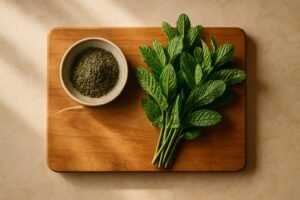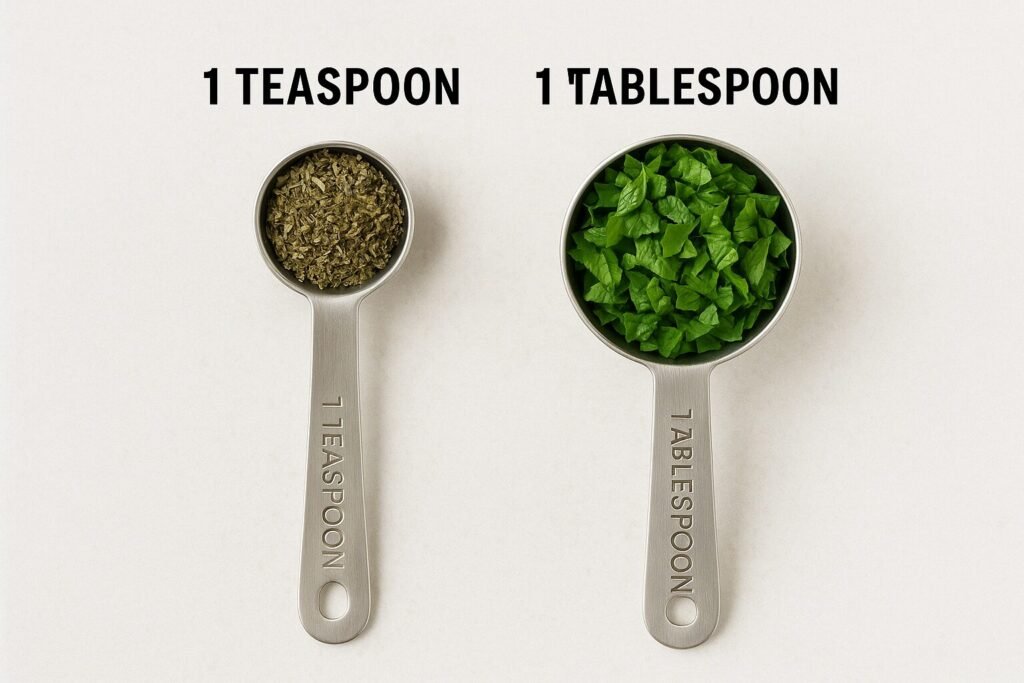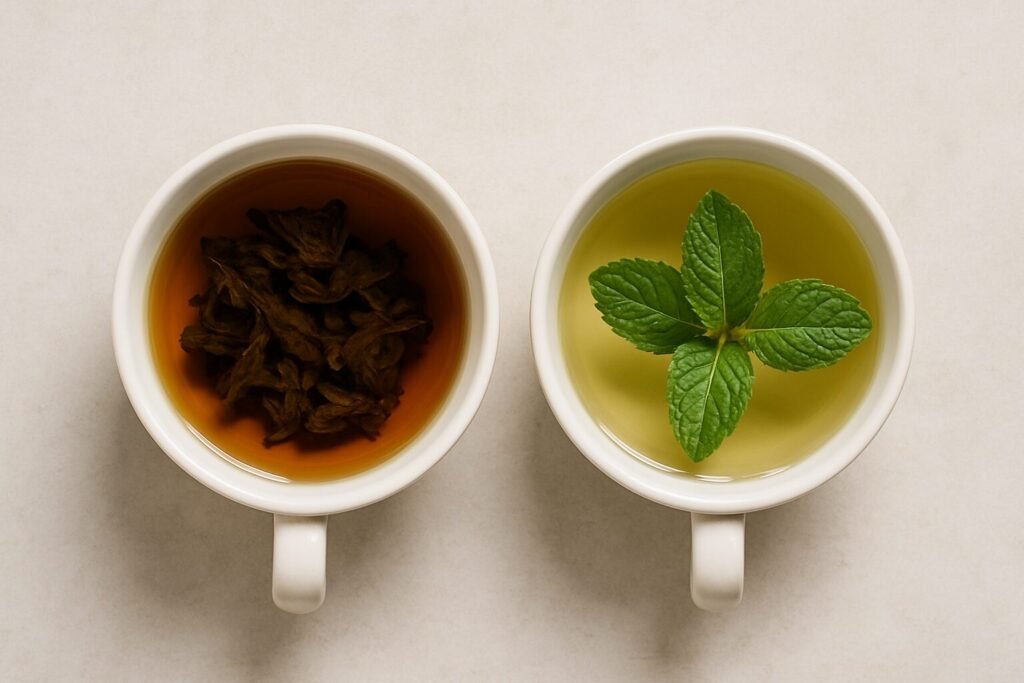
Mint is one of those herbs that sneaks its way into everything — from refreshing teas to savory sauces and even desserts. But when a recipe calls for mint, you might wonder: should you grab a bunch of fresh leaves, or reach for dried mint instead?
Let’s break down the flavor, nutrition, and best uses of each, so you’ll know exactly which mint to use (and when).
Flavor Showdown: Fresh vs. Dried
Fresh mint has that unmistakable cooling, crisp, garden-fresh bite. It’s light, refreshing, and perfect for garnishes, drinks, and recipes where you want a delicate herbal pop.
Dried mint, on the other hand, is concentrated and bold. Because the moisture is gone, its oils and flavor are amplified. Just a pinch delivers the same impact as a handful of fresh leaves. Think of it as mint in “flavor overdrive.”
👉 Rule of thumb: 1 teaspoon dried mint ≈ 3 teaspoons fresh mint.

Nutrition: Does Drying Kill the Benefits?
Fresh mint leaves contain a little more vitamin C and natural enzymes, but dried mint still holds onto plenty of antioxidants and essential oils.
The difference?
- Fresh mint: Slight edge for vitamins, great for quick use.
- Dried mint: Potent, shelf-stable, and still packed with health-supporting compounds.
Want to dive deeper into benefits? Check out our full post on what dried mint is good for.
When to Use Fresh Mint
Fresh mint shines in recipes where visual appeal and delicate taste matter:
- Mojitos and cocktails 🍸
- Salads (especially fruit salads) 🥗
- Garnishes for desserts 🍨
- Quick sauces and salsas
Use it when you want that bright, fresh “green” lift.
When to Use Dried Mint

Dried mint is your go-to for cooking and long infusions:
- Mint tea (classic comfort in a cup) ☕
- Yogurt dips like cacık or tzatziki 🥒
- Meat rubs and marinades 🍖
- Roasted vegetables and potatoes 🥔
- Long-simmered stews and soups 🍲
Because it’s more intense, dried mint holds its own in recipes where fresh leaves would lose their flavor.
👉 Stock up on premium dried mint leaves for everyday cooking.
The Final Verdict
It’s not about better vs. worse — it’s about fresh vs. bold.
- Fresh mint = light, crisp, refreshing
- Dried mint = concentrated, powerful, long-lasting
Keep both in your kitchen, and you’ll always have the right mint for the moment.

Quick FAQ
Is dried mint stronger than fresh?
Yes — dried mint is more concentrated, so you need less of it.
How do you substitute dried for fresh mint?
Use 1 teaspoon dried mint for every 3 teaspoons fresh mint.
Does dried mint go bad?
Not really — but it loses potency. Store in an airtight container, away from heat and light, and it’ll stay flavorful for up to 2 years.
👉 Whether you’re brewing tea, seasoning lamb, or garnishing a mojito, mint has your back. Fresh or dried — there’s always a place for both.
